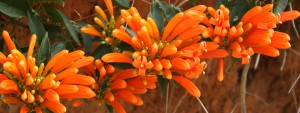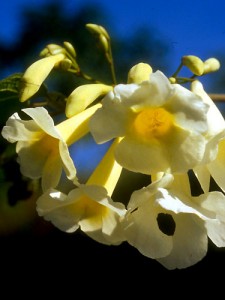Study aims to investigate the structure and evolution of the Amazon biota by integrating different areas of knowledge
Why did the Amazon rainforest become what it is today? What happened throughout its geological and biological history to enable the astounding biotic richness we see today to amass in a single biome? How did different biological and geological processes participate in this process? These are some of the questions that the project entitled Structure and evolution of the Amazonian biota and its environment: an integrative approach, led by Profs. Lúcia Lohmann (USP) and Joel Cracraft (American Museum of Natural History), hope to answer. These seemingly simple questions are in fact highly complex and closely interconnected. To understand the evolution of the Amazon different viewpoints must come together to recount and complete this story.
The project is a partnership between the Biota/FAPESP and Dimensions of Biodiversity/NSF programs, with each institution providing USD 2 million in funding over five years. Lohmann reports that the idea for the project arose in 2009 when she met American researcher Joel Cracraft in South Africa for the annual meeting of the bioGENESIS/DIVERSITAS Scientific Committee – an international program aimed at facilitating and developing integrated research in the field of biodiversity to establish new public policies and conservation strategies. It was then that the two began developing this bold proposal, with a view to understand Amazonian biodiversity patterns. It was finalized in 2010 and submitted to the National Science Foundation’s (NSF) Dimensions of Biodiversity call for proposals. “We were not chosen that year or the following one. There is a lot of competition and hundreds of good projects, of which only half a dozen are chosen, but we received excellent reviews that helped us improve the project for submission in 2012 as a partnership between Biota and Dimensions of Biodiversity, and were selected.” The project, approved in September 2012 and scheduled to run through August 2017, will conduct an in-depth investigation into events in the Amazon over the last 20 million years.
This new evolutionary overview of Amazonian biodiversity is based on the study of four groups of organisms (butterflies, plants, birds, and primates). According to Lohmann, “we chose groups whose taxonomy was already relatively well studied as models so we could examine their distribution patterns in detail in a short period of time and understand their evolutionary history.” To that end, the team is using NextGen Sequencing data to reconstruct evolutionary trees that provide information on the relationship between species. In addition, team members are also compiling a large database of georeferenced locations in the Amazon for the four focal groups, which will be available via Sinbiota (BIOTA’s Environmental Information System). These data will be used in spatial analyses and to model species distribution in order to better understand the current and past distribution patterns of the groups under study. “The integration of this data will provide us with vital information to gain a better understanding of the processes involved in the origin and maintenance of lineages on different spatial scales.” We hope that this information will help us clear up a number of uncertainties about the patterns and processes of diversification in the Amazon,” adds Lohmann.
The project also includes a study of the region’s geological history and climate, aiming at enhancing our knowledge of the Amazon environment and infer environmental stability patterns or changes since the Late Neogene (23 million years ago). This information will be combined with the evolutionary trees and spatial distribution data to obtain a better understanding of the region’s historical demographic and phylogeographic patterns. “Geological aspects and new stratigraphic data will contribute significantly to clarifying uncertainties about the paleogeographic history of the Amazon’s drainage systems, particularly in the western region since the Late Neogene, when the effects of climate change intensified” explains Lohmann. Paleobiogeographic, genetic-demographic and geological data will be integrated using macroecology methodologies, remote sensing, and climate and atmospheric modeling. “By the end of the project we hope to be able to reconstruct the Amazon’s past environments on different spatial scales and understand the role of these environments in biological diversification. A better understanding of the evolutionary ecological processes that shaped the structure and evolution of the Amazonian Biota will contribute significantly to constructing relevant future scenarios to establish better conservation strategies, public policies and sustainable management programs in the region,” explains Lohmann.
Integration
The study mobilized almost 40 researchers from five countries (Brazil, Argentina, Canada, the USA and United Kingdom) and 19 institutions: USP (IB, IGc, Cena, ESALQ), UNICAMP, UFG, UFPA, INPA, the Emílio Goeldi Museum of Pará, San Miguel de Tucumán Superior Institute of Entomology, Canadian Institute for Advanced Research, University of Edinburgh, University of Salford, American Museum of Natural History, City University of New York, Field Museum, Natural History Museum of Los Angeles, Tennessee State University, The New York Botanical Garden, University of Colorado, University of Michigan, and University of Oregon.

To successfully coordinate a study of this size, the project was organized into seven main teams: plants, primates, birds, butterflies, biogeochemical cycles, geology and special analyses. In the first few years of the project, the group has been working on acquiring innovative data within each of these areas to compile solid databases that will be integrated into multidisciplinary analyses from the third year onwards.
Maintaining integration in a project with so many researchers from different areas of knowledge and institutions demands special attention. One of the integration strategies used by the researchers was to outline multidisciplinary publications beforehand in order to guide data collection and the exchange of information among team members. In addition, the project holds an annual scientific event open to the public followed by a week of team meetings. The first event took place at FAPESP and brought together 450 participants including professors, researchers, and post-doctoral fellows, as well as undergraduate and graduate students. The next event is scheduled for Manaus and will include a workshop on biogeography methods, a symposium open to the scientific community, and internal meetings for team members..
Another positive feature of the project is its interaction with the group of researchers studying the Atlantic Forest Biome, a project that also involves the partnership between the Biota/FAPESP and Dimensions of Biodiversity/NSF programs entitled Dimensions US-BIOTA São Paulo: a multidisciplinary framework for biodiversity prediction in the Brazilian Atlantic forest hotspot coordinated by Cristina Yumi Miyaki (USP) and Ana Carolina O. Queiroz Carnaval (City University of New York). Despite centering on different biomes, both projects have similar objectives and also share some team members.
Finally, Lohmann concludes: “Very few call for proposals allow the submission of such bold projects that encompass so many different disciplinary approaches. The combination of researchers with such diverse training enriches the work because it provides key pieces to the puzzle and helps us think outside the box. In my opinion that is the best way to achieve innovation.”
By Paula Drummond de Castro.
